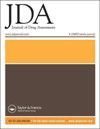Variation in health plan specialty drug coverage: an empirical analysis
IF 2.4
引用次数: 0
Abstract
Abstract Background: Patients’ access to specialty drugs is determined in part by their health plan. Because health plans develop their own coverage policies, coverage of specialty drugs can vary, which in turn may affect their members’ access to care. Aims: Our objective was to examine variation in how commercial health plans cover specialty drugs. Methods: We used the Specialty Drug Evidence and Coverage (SPEC) Database for this research. SPEC contains 6,139 specialty drug coverage decisions current as of December 2018 issued by 17 of the largest US commercial health plans. SPEC includes 239 drugs and 484 drug-indication pairs (when a drug is approved for multiple indications, each drug-indication pair is represented separately in the database). We compared each plan’s publicly available coverage policies with the drugs’ FDA labels and categorized coverage as follows: (i) broader coverage than the FDA label (the plan provided coverage for populations not included in the FDA label indication), (ii) coverage with no restrictions, (iii) coverage with restrictions (the plan applies restrictions beyond the FDA label to their coverage decision, e.g., step edits or patient subgroup restrictions), (iv) mixed restrictiveness (coverage was more restrictive than the FDA label in one way but broader in another) (v), or not covered. We examined the consistency in coverage of the drug-indication pairs across the included health plans. Results: Overall, 10% of coverage decisions were broader than the FDA label, 43% covered with no restrictions, 40% covered with restrictions, 5% “mixed” restrictiveness, and 3% not covered. We found substantial variation between health plans, with the proportion of the included plans’ coverage decisions including restrictions ranging from 14% to 85%. We also found notable variation in how the included health plans covered the included drug-indication pairs, with only 5% of drug-indication pairs covered the same way by all included plans. Conclusions: Health plans applied restrictions in roughly half of their coverage policies. We found notable inconsistency between plans, with the proportion of restricted coverage decisions varying widely. All plans covered few drug-indication pairs the same way, indicating that a patient’s plan may have a large influence on their access to specialty medications.健康计划中特殊药品覆盖率的变化:一个实证分析
摘要背景:患者获得特殊药物的机会在一定程度上取决于他们的健康计划。由于健康计划制定了自己的覆盖政策,特殊药物的覆盖范围可能会有所不同,这反过来可能会影响其成员获得护理的机会。目的:我们的目的是研究商业健康计划如何涵盖特殊药物的差异。方法:我们使用特殊药物证据和覆盖率(SPEC)数据库进行本研究。SPEC包含截至2018年12月由17个美国最大的商业健康计划发布的6139项特殊药物覆盖决定。SPEC包括239种药物和484对药物适应症(当一种药物被批准用于多种适应症时,每个药物适应症对在数据库中单独表示)。我们将每个计划的公开覆盖政策与药物的FDA标签进行了比较,并将覆盖范围分类如下:(i)比FDA标签更广泛的覆盖范围(该计划为未纳入FDA标签适应症的人群提供了覆盖范围),(ii)无限制的覆盖范围,(iii)有限制的覆盖范围(该计划将超出美国食品药品监督管理局标签的限制应用于其覆盖决定,例如,步骤编辑或患者亚组限制),(iv)混合限制性(覆盖范围在一方面比美国食品药品管理局标签更严格,但在另一方面更广泛)(v),或未覆盖。我们检查了纳入的健康计划中药物适应症对覆盖范围的一致性。结果:总体而言,10%的覆盖范围决定比美国食品药品监督管理局的标签更广,43%的覆盖范围没有限制,40%的覆盖范围有限制,5%的“混合”限制,3%没有覆盖。我们发现,健康计划之间存在很大差异,包括限制在内的纳入计划的覆盖决定比例从14%到85%不等。我们还发现,纳入的健康计划覆盖纳入的药物适应症对的方式存在显著差异,只有5%的药物适应证对以相同的方式覆盖所有纳入的计划。结论:健康计划在大约一半的覆盖政策中实施了限制。我们发现计划之间存在明显的不一致性,限制覆盖决定的比例差异很大。所有计划都以相同的方式涵盖了少数药物适应症对,这表明患者的计划可能会对他们获得专业药物产生很大影响。
本文章由计算机程序翻译,如有差异,请以英文原文为准。
求助全文
约1分钟内获得全文
求助全文

 求助内容:
求助内容: 应助结果提醒方式:
应助结果提醒方式:


